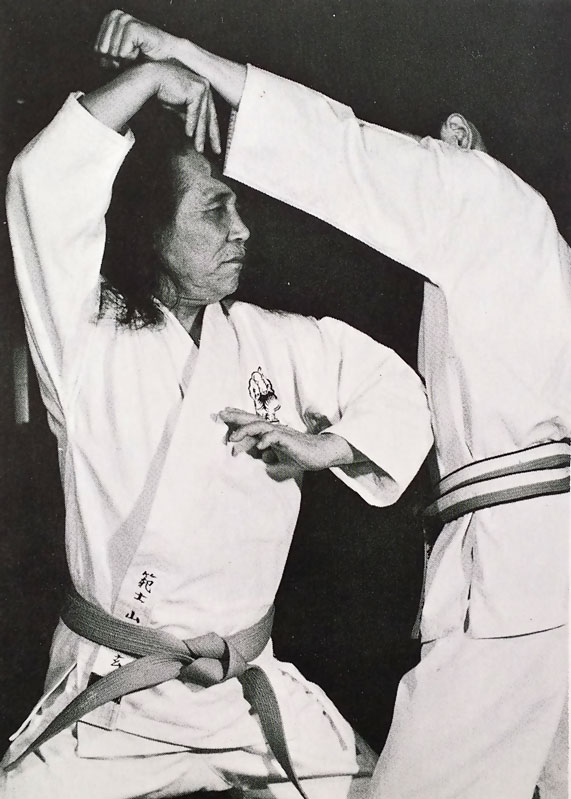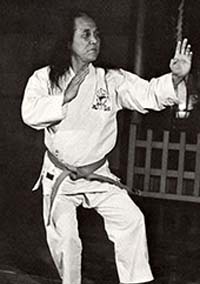
Gogen Yamaguchi was born on January 20, 1909, in Kagoshima city on the southern island of Kyushu. Already as a youngster he showed great interest in the Martial Arts.
During his early school days he trained kendo, (Japanese fencing) and it was during this time that he started his karate training under the tutelage of Mr Maruta, a carpenter from Okinawa.
Mr Maruta, a Goju practitioner, was drawn to the young Yamaguchi’s serious attitude and his willingness to train hard. Mr Maruta taught Yamaguchi all he knew about the Goju system.
During his college days as a law student, Yamaguchi established his first karate club at the Ritsumeikan University in Kyoto.
Soon the dojo became famous in the city, known for it’s hard training and fierce breathing exercise. In those days karate men practised only kata (formal movements) and yakusoku kumite (prearranged sparring) and were unable to have matches between each other since they did not hold back their techniques.
It was during this period that Yamaguchi created the first stages towards what is known as jyu kumite (free fighting) and established rules to decide the winner of a match. Some of the rules are still in use today in what is known as sport or competition karate.
In 1931, at the age of 22, Gogen Yamaguchi was introduced to the founder of the Goju style, – Master Chojun Miyagi. This meeting proved to have a profound affect upon Yamaguchi’s outlook on karate. Previously he had only considered the hard aspect of Goju but after his meeting with Master Miyagi he was determined to train himself spiritually as well as physically. Master Miyagi thought highly of Yamaguchi who seemed to have mastered the hard aspect of Goju so well and gave him the nickname Gogen, meaning `Rough’. He then appointed Gogen Yamaguchi as his successor of the Goju school in Japan.
Master Miyagi thought highly of Yamaguchi who seemed to have mastered the hard aspect of Goju so well and gave him the nickname Gogen, meaning `Rough’. He then appointed Gogen Yamaguchi as his successor of the Goju school in Japan.
Note: This particular passage of the meeting of the Master Teacher and student has been a debatable as history and personal testimonies of several masters of the time disclosed other stories that may be questioned of this era’s historical data.
During the years to follow Gogen Yamaguchi often spent long stays at Mount Kurama where he subjected himself to ascetic exercises and hard training with sanchin, meditation and fasting.
Between 1938-1945 he was sent to Manchuria on government and military assignments. On several occasions during his stay there, he could thank his skills in karate and his mental training that he stayed alive. During the Japanese-Russian war 1945 Yamaguchi was taken prisoner of war and sent to a prison camp in Mongolia. He was kept there under harsh conditions for two years.
Once again his strength and skill were severely put to the test. During all these years he still continued to train and develop Goju-karate. After his release and return to Japan, Yamaguchi became one of the most exciting figures in karate history. Known throughout the world as the `cat’ because of his grace and speed in movement and because of his favourite fighting stance which is called neko ashi dachi (cat stance).